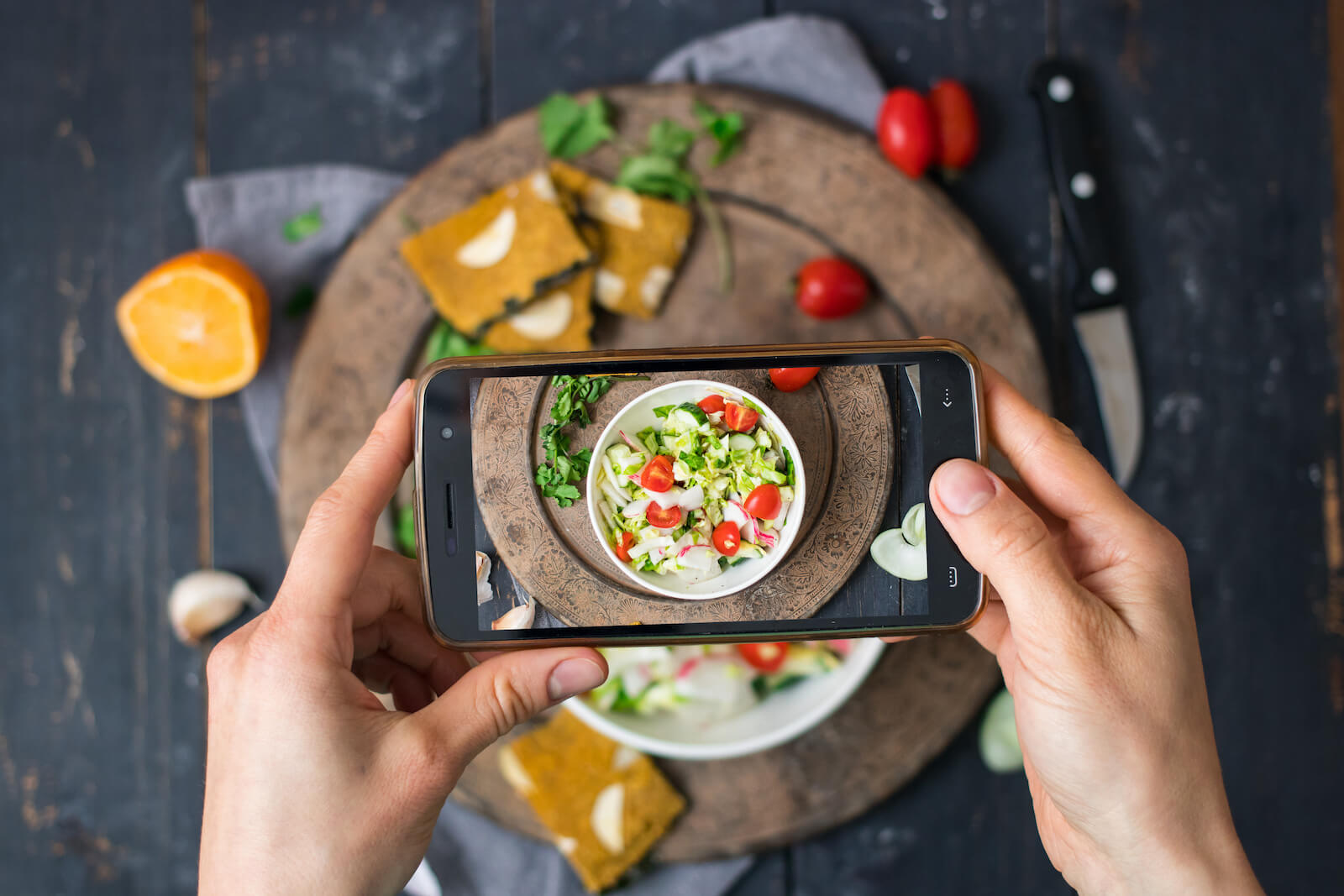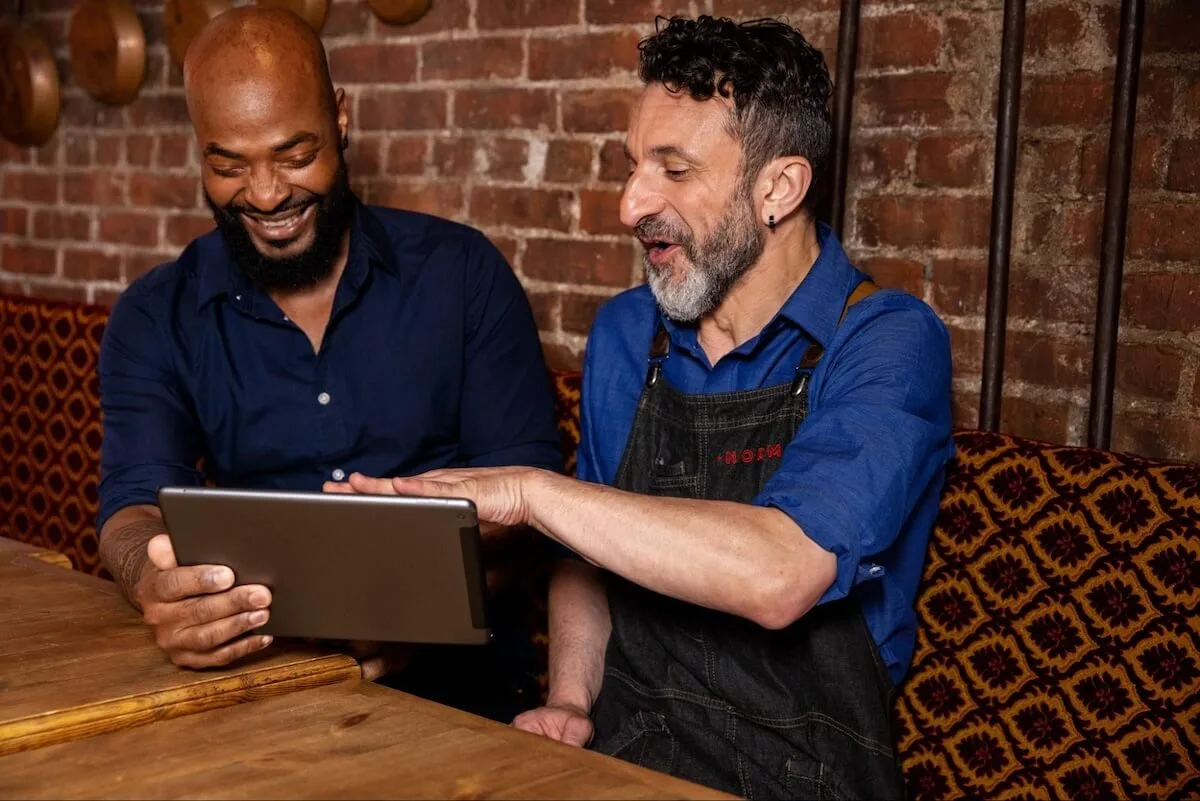Restaurant website design tips to get diners in the door
Skip the article and turn takeaways into action by scheduling a call with our team.
Restaurant websites are among the most important ingredients for a restaurant’s success. A whopping 77% of diners will visit a restaurant’s website before making a decision on whether to dine there. Whether you’re in fine dining or takeout only, serving Mexican food, fast food, or anything in between, a high-quality website will be a huge traffic driver to your business.
Every restaurant website is different, just as every eatery has its own unique take on what would otherwise be similar menu items and dining experiences. At the same time, some elements separate the best restaurant websites from the rest. Whether you’re opening your first restaurant or have been in business for decades, here are some insights to incorporate into your restaurant website design.
The best restaurant website designs put the customer’s needs first

To best understand how solid web design will help your restaurant, think about the last time you bought something online. High-quality e-commerce websites likely greeted you with a beautiful homepage and a navigation bar that helped you find everything you were looking for. You quickly found yourself scrolling through carousel after carousel of things you never intended to buy, but slideshows of eye-catching photos got you hooked. Then, a simple checkout process made buying whatever you needed (and perhaps much more) all too easy.
Use those online stores for design inspiration on how to put the customer’s needs first. And while restaurant websites—with the obvious exception of online ordering for takeout and delivery—may not have the same goal of getting people to make a purchase online, they can absolutely follow e-commerce best practices in shaping a smooth user experience that takes people from your homepage to your front door.
When designing your restaurant website, consider what potential diners are looking for when deciding on a place to eat. Your web visitors should be able to see your tantalizing menu, visualize the beautiful dining room, and easily book a table, find a phone number, or access online ordering.
Try the following to help convert potential diners into paying customers:
- Make your menu easy to find: When customers open your homepage, they should see a “Menu” option in the navigation bar. Your menu should be an HTML file (not a PDF), so it’s easy to pull up. This will also benefit you from an SEO perspective.
- Include your contact information on every page: Even in the digital age, a lot of customers want to call in to book a table or ask questions. Help them take that next step by making your phone number, email, address, hours, and social media widgets easily findable on every page.
- Add a reservations button and/or online ordering button: These should be on your homepage as well as in your navigation bar so web visitors can book a table, order takeout, or get delivery. Yelp Guest Manager has a convenient booking widget that you can easily add to your restaurant website—no technical experience needed.
Content is king for high-quality restaurant websites

Mouth-watering food photos, slideshows, and videos are a surefire way to lure web visitors into your restaurant. Just listing your menu items isn’t enough: Potential guests want to see what they’ll be eating and get a sense of what the dining experience will be like before they leave their homes. People eat with their eyes, so play that to your advantage by showcasing your menu items in the most appetizing way possible.
Here’s how to best incorporate photos onto your website:
- Put your highest-impact content on your homepage: All the best restaurant website design examples have photos of signature menu items or a beautiful dining area front and center, without any scrolling needed by the user. Find your most camera-friendly dish and make it the poster child of your restaurant website.
- Use slideshows: Carousels of food, drinks, dessert, and ambiance allow content to reach web visitors more efficiently. Just make sure to use them sparingly, perhaps with just one slideshow on your homepage.
- Include social media feeds: Feature your Instagram channel to showcase new content without having to edit your website. Most website builders make it easy to add a social media feed.
Another valuable form of content to share is customer reviews: Prominently featuring customer reviews on your homepage can demonstrate authenticity and help build trust among new customers. Take some of your favorite reviews from your Yelp page or Google reviews and shout them from the rooftop (metaphorically speaking).
If you’d like some additional help with how to take beautiful food photos without a fancy camera, here’s a smart restaurant marketing guide that will also give you pro tips for social media and other strategies.
Make mobile and SEO top priorities

Your restaurant website design should keep smartphones in mind. More than 80% of potential customers use their phones to search for restaurants. To convert those people, make sure that your menu items, phone number, and overall user experience convert easily from desktop to mobile.
It’s relatively easy to make a restaurant website responsive, i.e., convert its display to fit desktop, tablet, and mobile views. Most do-it-yourself web builders, such as WordPress, Squarespace, and Wix, automatically make your website mobile-friendly, so you don’t even have to worry about it. These sites also feature website templates that can save a lot of time when designing your webpage.
Search engine optimization, or SEO, is another important factor that helps you get discovered by potential customers. In short, SEO is the practice of increasing your website’s visibility when people search for terms that relate to your product or service using a search engine like Google or Bing. So, if you’re an ice cream shop, you’re going to want your store to show up online when people search for things like “ice cream near me.”
Here are a few tips to improve your website’s SEO:
- Add keywords across your website that tie to your core business: If you’re a Mexican eatery based in Los Angeles, you’ll want terms like “Mexican food” and “LA” in your headers, page titles, and page descriptions.
- Restructure a few key elements: On each page, add headers to organize text, alt text to properly describe any photos, and keyword-rich titles and descriptions for each of your pages. Most web builders should make this task easy to accomplish with no tech knowledge needed.
- Avoid keyword stuffing: This is when you go overboard by using your keywords so often that your website doesn’t make sense or sounds robotic when someone reads through it. Search engines can easily pick up on keyword stuffing, and it will work against you.
Focusing on local SEO can help you stand out and get local traffic. The goal of local SEO is to get to the top of search engines for specific terms, like “Topeka pizza.” The difficulty of achieving high rankings in search engines via local SEO practices depends on both your location and the type of business you run. Generally, the narrower the topic, the easier it is to snag the term. Because it is more area-specific, “Topeka pizza” is much easier to rank high for than “California French restaurant.”
Keep your brand identity consistent

When customers discover your website, they should get the same first impression they’d get as if they walked in your door. The best way to do that is to have a clear brand identity and use it consistently on your website, all the way from your landing page to your online menu. So, what might that look like?
To have a coherent brand identity, you’ll want at minimum:
- A consistent font
- A unique color scheme
- A logo that’s memorable
- Consistent brand voice (e.g. humorous, calm, wry, elegant, etc.)
- Menu pricing that reflects your genre (e.g. fine-dining restaurants should use whole numbers while fast food can use dollars and cents)
Even if a customer only spends a short while on your page, your brand identity should be strong enough that they’ll remember your establishment even if they don’t visit that day. Devoting time to building your brand and writing it down in specifics helps everyone understand what you’re about.
Consider integrating an online ordering system

If delivery and takeaway are significant parts of your business, consider adding an online ordering system to your website. There are two ways to go about this: Either add your own proprietary online ordering system or look to a third-party delivery service like DoorDash, which offers online ordering features.
Should you opt to build your own system, you’ll need drivers on hand to make deliveries. A pizza restaurant, for example, would be well served to have its own delivery drivers to cut down on the commissions or payment processing costs third-party delivery services can charge.
However, if deliveries aren’t a major part of your business, it may be wise to outsource the deliveries to third-party delivery services. That means lower labor costs since you don’t have to hire drivers.
Web designers are helpful, but not necessary
If the idea of creating a website seems like too much to handle, a web designer can be a big help. These professionals will save you time and produce a great restaurant website with top-notch functionality.
However, if you’re willing to dedicate a few hours to building your own restaurant website, you don’t need any technical knowledge to get started. Platforms like WordPress, Wix, Squarespace, and many others provide a wide range of templates and allow you to simply drag and drop headers, images, text, and other elements to your liking.
It’s easier than you think to create a homepage and a navigation bar with options for online ordering, booking a table, and buying gift cards. For restaurant website design examples, just search for some of your favorite restaurants online and see what their websites look like. Use those as loose templates for design inspiration, and modify them on your website builder.
Promote your website with Yelp Guest Manager

Once you build a quality restaurant website, you want potential new customers to find it online. Make sure to create a Yelp Page, which will help you get discovered by the 92 million people who search on Yelp every month.
Next, add full-service front-of-house software like Yelp Guest Manager to get the gold standard in software. It syncs with POS systems, offers fully customizable floor plans, scales smoothly, and makes online reservations and waitlists a breeze. It pairs with your Yelp page, too: Restaurants that use Guest Manager paired with Yelp Ads experience 87% more traffic on their Yelp business page.
Guest Manager helps get customers to your reservation page. Booking links are now available to all Guest Manager users at no extra cost and can be shared via social media. This takes a lot of friction out of a call to action, ensuring customers need to do as little as possible to find you. Customers can also use the Yelp mobile app to make reservations, which are then automatically entered into your system.
We’d love to show you more about Guest Manager and how it can integrate into your restaurant website design. Reach out to us for a free demo and we’ll get started.